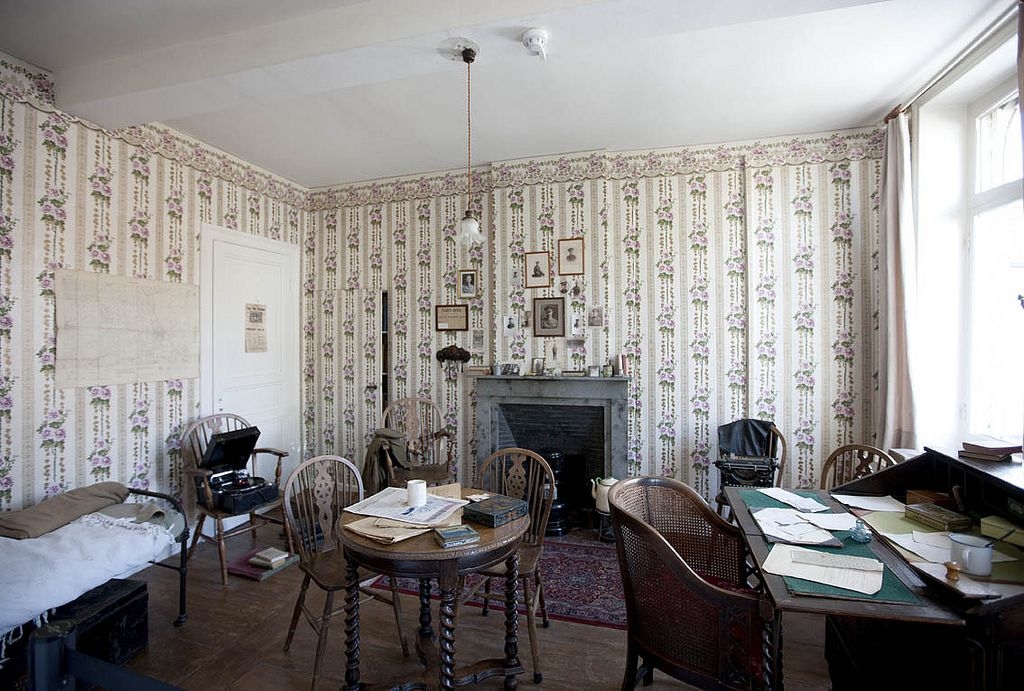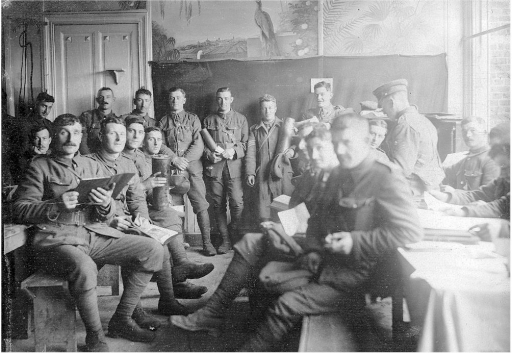Talbot House in Belgium is appealing for wartime photos of the famous ‘home from home’ created for British soldiers in the town of Poperinge.
Talbot House Museum has only five pictures capturing scenes of life at the club during the First World War but it’s convinced there must be many more.
Descendants of veterans and others associated with ‘Toc H’ are being urged to have a look for photographs as Talbot House prepares to mark its own Centenary in December 2015.
Thousands of British soldiers passed through this refuge from the fighting during the three years it was open from the end of 1915.
—————————————————————————————–
Centenary News Update – Monday May 18th 2015
Gertjan Remmerie, of Talbot House Museum, tells us more about the Centenary photo appeal:
“Most of the photographs we have now, including the one on Centenary News, were taken on April 24th 1916. Tubby Clayton, the boss of the house, had been given permission by army officials for this series (we have five photographs in total). The series was probably meant for the Talbot family (the parents of Gilbert and Neville Talbot).
“Another official photograph we have is linked to the Mission Dhuicque.
“Then there are the individual and unofficial pictures, taken by soldiers and officers that had a camera. Some of these photographs were later given to us by veterans or their family.
“However, it feels like this part of our collection is far from complete. Perhaps some real treasures that tell us about life in the Every Man’s Club might still be hiding in attics, old photo albums and journals.”
—————————————————————————————–
Talbot House – a brief history
Talbot House was founded by the army chaplains, Neville Talbot and Philip Clayton (known as Tubby), as an alternative to the bars and brothels which had earned Poperinge the nickname of ‘Little Paris.’
The small Belgian town was used as the railhead to supply troops and supplies for the defence of the Ypres salient, swelling its peacetime population from 20,000 to 250,000.
Tubby Clayton’s aim was to recreate the comforts of home, an ‘every-man’s club’, for soldiers on leave from the trenches, regardless of rank or status.
Signs such as ‘abandon rank all ye who enter here’ set the informal tone for a club where guests could browse in the library, enjoy the tranquillity of the walled garden, or drink copious quantities of British tea served in the large kitchen (a tradition that continues).

The Chaplain’s office (Photo:© milo-profi photography/Visitflanders)
The Christian ethos of Talbot House was discreet, summed up in a sign to Tubby Clayton’s own office: ‘Come upstairs and risk meeting the Chaplain.’
Concern that calling the club ‘Church House’ would frighten many off resulted in it being named after Neville Talbot’s late brother, Gilbert, who was killed, aged 23, at Hooge in July 1915.
But thousands of soldiers took their last Holy Communion in the chapel at the top of the building before dying in action on the battlefields of Ypres. Many others were also baptised and confirmed here before returning to the trenches.
Talbot House was nicknamed Toc H, after the British military signalling term for the letter T. After the First World War, Tubby Clayton founded the charitable movement Toc H whose work continues today.
Events being held to mark the Talbot House Centenary in 2015 include:
*A temporary exhibition highlighting the work of Tubby Clayton and his fellow military chaplains during the Great War, May 14th-September 10th at Talbot House.
*The launch of a specially cultivated poppy-like rose recalling the beauty of the Toc H garden for troops used to the mud of the Flanders trenches.
The ‘Talbot House Rose’ will be presented to the Lord Mayor of London as part of a traditional ceremony on June 11th at the church of All Hallows by the Tower, where Tubby Clayton served as vicar for 40 years until his retirement in 1962.
On June 27th, the rose will be officially presented at Talbot House and inaugurated in the chapel.
*Talbot House will host a week of events in December 2015 marking its 100th anniversary, starting on December 11th with the lighting of an oil lamp in the chapel symbolising its significance as a ‘light in the darkness.’ During a 24-hour vigil, lamps will be lit worldwide by sections of the Toc H charity.
More information about Talbot House and its history can be found here. Email: info@talbothouse.be
Source: Visitflanders; Talbot House; Wikipedia
Images courtesy of Visitflanders/ milo-profi photography; Talbot House
Posted by: Peter Alhadeff, Centenary News
